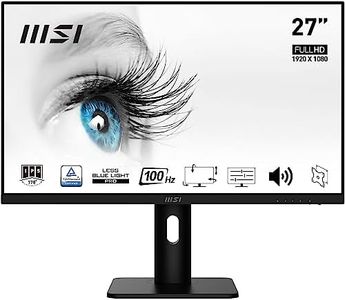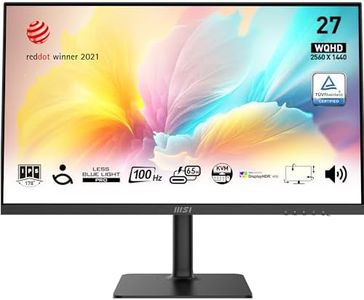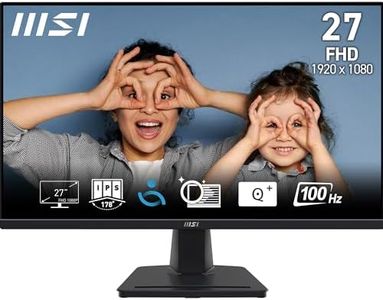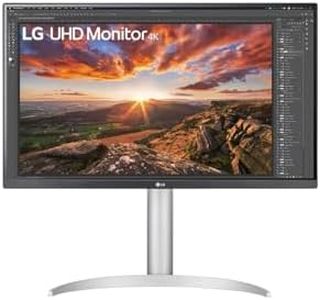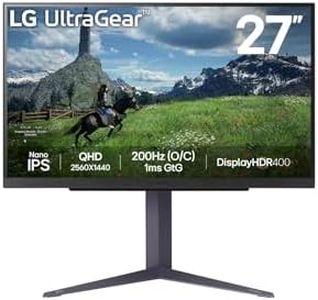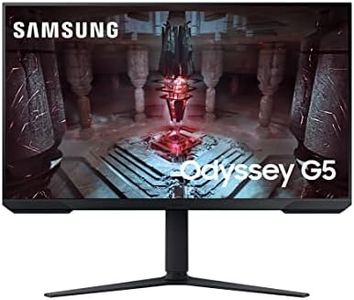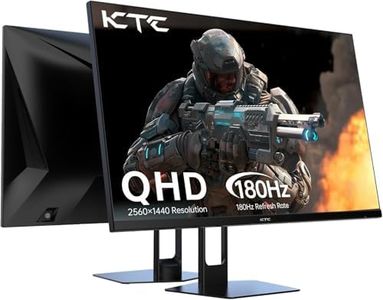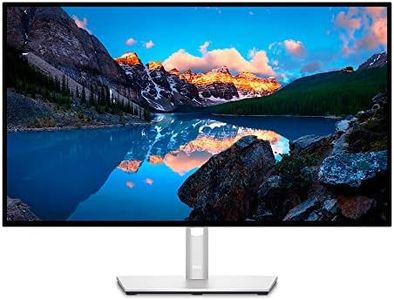We Use CookiesWe use cookies to enhance the security, performance,
functionality and for analytical and promotional activities. By continuing to browse this site you
are agreeing to our privacy policy
10 Best 27 Inch Monitors
From leading brands and best sellers available on the web.Buying Guide for the Best 27 Inch Monitors
Choosing the right 27-inch monitor can be a rewarding process, as this size gives a good balance between screen real estate and comfortable viewing for most desks. To pick the best monitor for your needs, it’s important to understand the main features and how they relate to what you’ll be using the monitor for – whether it’s work, gaming, content creation, or general use. Evaluating each key specification according to your activities will ensure you get the most value and satisfaction from your purchase.ResolutionResolution refers to the number of pixels displayed on the screen and is a major factor in how clear and sharp images will appear. On a 27-inch monitor, common resolutions include Full HD (1920x1080), Quad HD (2560x1440), and 4K (3840x2160). Full HD is suitable for everyday tasks and watching videos, though some may find it less crisp at this size. Quad HD offers a noticeable improvement in sharpness and is great for office work, design, and gaming. 4K delivers incredibly detailed images, making it ideal for professional creative work and those who want the very best visuals. Choose based on how much detail you need and how close you’ll sit to the screen; the higher the resolution, the more demanding it is on your computer’s graphics.
Panel TypeThe panel type affects color accuracy, viewing angles, and response times. The main types are IPS, VA, and TN. IPS panels give the best color and widest viewing angles, which makes them a great choice for design, content creation, and general use. VA panels offer strong contrast and deeper blacks, making them good for movie watching and mixed use. TN panels tend to be more affordable and have very fast response times, sometimes preferred by competitive gamers, but have weaker colors and viewing angles. Pick the one that best matches what you’ll use the monitor for most often.
Refresh RateThe refresh rate, measured in hertz (Hz), tells you how many times the screen can update its image per second. Standard monitors have a refresh rate of 60Hz, which is fine for everyday use, web browsing, and watching videos. Higher refresh rates like 75Hz, 120Hz, or 144Hz make for smoother visuals and are mostly beneficial for gamers, as they can provide a more responsive and comfortable gaming experience. If you plan to game a lot, consider a higher refresh rate; for general use, a standard rate is usually sufficient.
Response TimeResponse time measures how quickly a pixel can change from one color to another, typically in milliseconds (ms). Lower numbers mean less motion blur and ghosting, which matters most for fast-moving visuals like gaming or sports videos. A response time of 5ms or less is good for gaming and fast video, but for basic office work or browsing, a higher response time won’t be noticeable. Consider your main activities on the monitor to judge how much this matters to you.
Ergonomics and AdjustabilityThis refers to how much you can physically adjust the monitor for comfort—such as height, tilt, swivel, and pivot (rotating vertically). Good ergonomics reduce physical strain during long periods of use, letting you fine-tune the screen position for the most comfortable view. If you’ll spend hours at your desk, working or gaming, adjustable stands are a big plus. For casual or occasional use, fixed stands may be enough, but comfort is always worth considering.
ConnectivityConnectivity describes the types and number of ports available for hooking up your devices. Common options are HDMI, DisplayPort, USB-C, and sometimes older ports like VGA or DVI. More ports mean more flexibility – handy if you want to connect multiple devices like laptops, gaming consoles, or streaming sticks. Consider what devices you use most and make sure the monitor has matching ports, ideally with some extras for future needs.
Color Accuracy and CoverageColor accuracy and coverage indicate how faithfully a monitor can display colors. Higher color accuracy is important for tasks like photo editing, video production, or any work where precise colors matter. This is often expressed in coverage of color spaces like sRGB or AdobeRGB. For creative professionals, high coverage (close to 100%) is key, while everyday users and gamers likely won’t need to prioritize this as much. Think about how important true-to-life colors are for your typical use.
